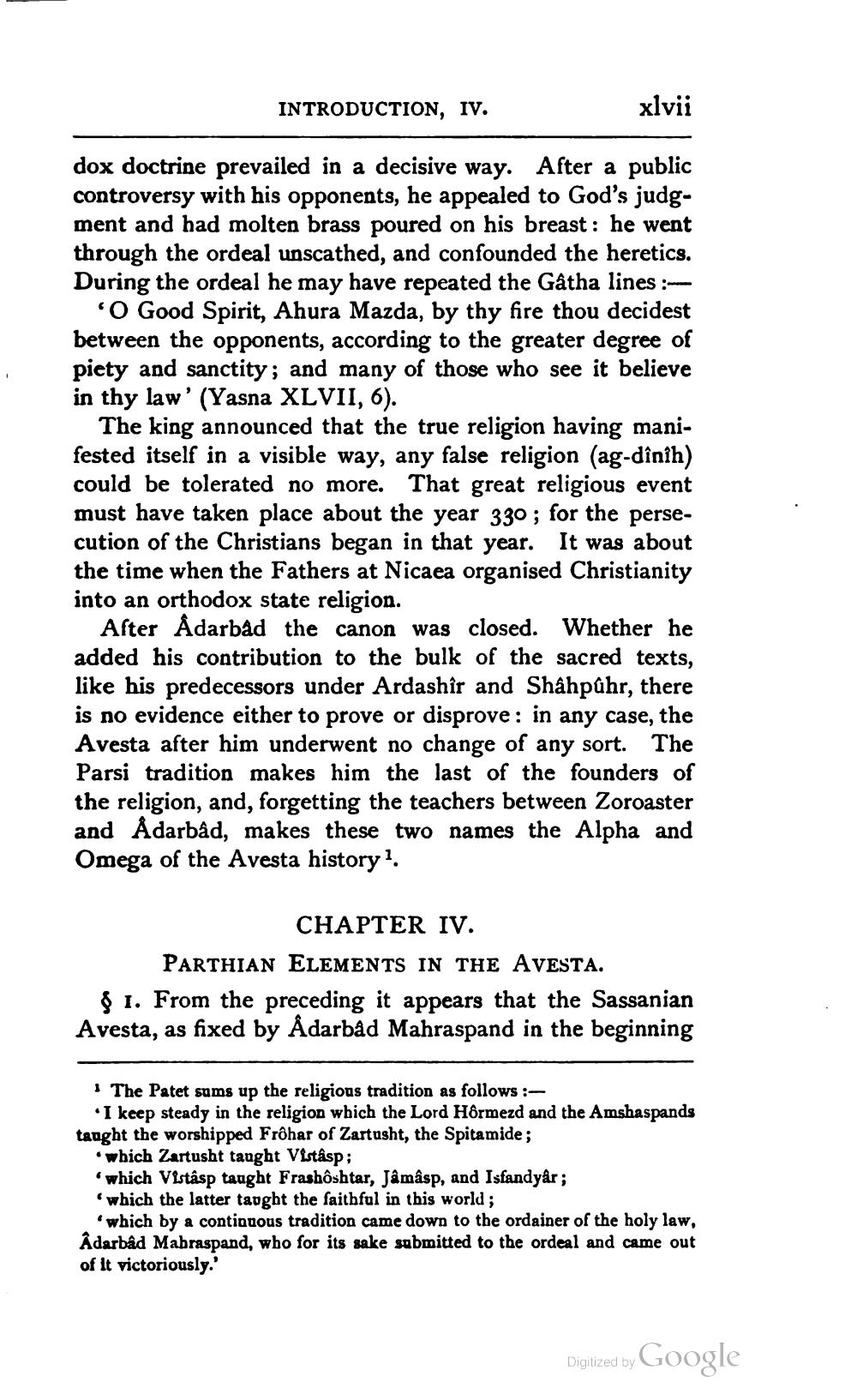________________
INTRODUCTION, IV.
xlvii
dox doctrine prevailed in a decisive way. After a public controversy with his opponents, he appealed to God's judgment and had molten brass poured on his breast: he went through the ordeal unscathed, and confounded the heretics. During the ordeal he may have repeated the Gâtha lines :
'O Good Spirit, Ahura Mazda, by thy fire thou decidest between the opponents, according to the greater degree of piety and sanctity; and many of those who see it believe in thy law' (Yasna XLVII, 6).
The king announced that the true religion having manifested itself in a visible way, any false religion (ag-dînih) could be tolerated no more. That great religious event must have taken place about the year 330; for the persecution of the Christians began in that year. It was about the time when the Fathers at Nicaea organised Christianity into an orthodox state religion.
After Ådarbåd the canon was closed. Whether he added his contribution to the bulk of the sacred texts, like his predecessors under Ardashîr and Shahpühr, there is no evidence either to prove or disprove: in any case, the Avesta after him underwent no change of any sort. The Parsi tradition makes him the last of the founders of the religion, and, forgetting the teachers between Zoroaster and Adarbâd, makes these two names the Alpha and Omega of the Avesta history 1.
CHAPTER IV. PARTHIAN ELEMENTS IN THE AVESTA. $1. From the preceding it appears that the Sassanian Avesta, as fixed by Ådarbåd Mahraspand in the beginning
· The Patet sums up the religious tradition as follows :
I keep steady in the religion which the Lord Hôrmezd and the Amshaspands taught the worshipped Frôhar of Zartusht, the Spitamide;
which Zartusht taught Vistâsp; which Vistasp taught Frashôshtar, Jâmâsp, and Isfandyår; which the latter taught the faithful in this world;
which by a continuous tradition came down to the ordainer of the holy law, Ådarbâd Mabraspand, who for its sake submitted to the ordeal and came out of it victoriously.'
Digitized by Google




